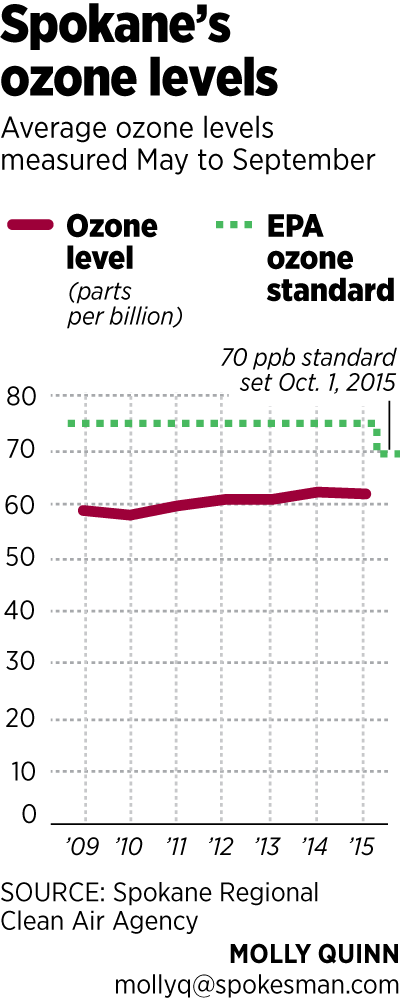Ozone pollution creeps up during hot weather

Summertime ozone pollution is becoming an increasing problem in the Spokane area.
The Spokane Clean Air Agency last week said it wants the public to become more aware of the threat from ozone, which is hazardous to health at concentrated levels or with long-term exposure.
Last week, one ozone reading went into the moderately polluted range for about an hour.
Throughout the week, the pollution level remains in the good range, but just below the threshold of moderate pollution.
Lisa Woodard, spokeswoman for the air agency, said that the problem with ozone, which is associated with hot temperatures, has been on the rise in recent years.
“Ground-level ozone is formed when several common airborne pollutants, volatile organic compounds and nitrogen oxides react with sunlight and heat,” the agency said in a news release.
“Vehicle exhaust and petroleum evaporation loss are the key contributors to the formation of ground-level ozone.”
Ozone is an irritant to the lungs and can cause respiratory problems for people with lung conditions. It is harmful for people with cardiovascular conditions. It is also associated with burning eyes and is the key ingredient in smog.
According to the American Lung Association, “Ozone aggressively attacks lung tissue by reacting chemically with it.”
Ozone is known to cause long-term health effects that may increase the risk of early death.
Julie Oliver, executive director of the air agency, said that her office wants to reverse the upward trend.
At the same time, the U.S. Environmental Protection Agency has lowered the threshold for a violation to 70 parts per billion.
Spokane in recent years has been seeing amounts at or above 60 ppb.
Spokane’s two ozone measuring stations are at Turnbull National Wildlife Refuge and Green Bluff.
The air agency offers a list of tips for helping reduce ozone, especially during hot weather:
Reduce unnecessary car trips or combine errands.
Drive less by carpooling, walking, riding a bike or taking transit.
Avoid topping off a fuel tank during refueling. Stop pumping when the nozzle clicks off the first time.
Refuel during evening hours to keep ozone-forming vapors out of the air during the hot part of the day.
Use or convert to electric or manual yard equipment. Do not refuel equipment when it is hot. It’s best to mow on a cool day.
Avoid idling a vehicle.
Contain or cap all paints, solvents and cleaners.